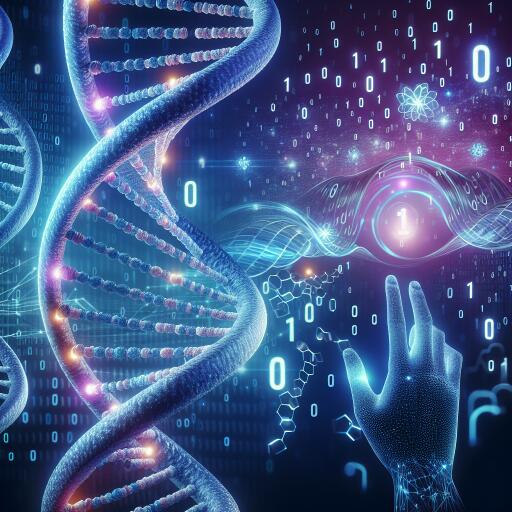Say hello to the epi-bit, a new approach to DNA data storage
The concept of using DNA as a medium for data storage has captured the imagination of scientists for decades. Known for its extraordinary data density, DNA, in theory, can store an astounding 215,000 terabytes of data in a single gram. Yet, the challenge has been in bridging the gap between this intriguing theoretical potential and practical application within computing systems.
Historically, the well-trodden path in DNA data storage has involved creating new DNA sequences from scratch—an approach termed “de novo” synthesis. Unfortunately, this process is often prohibitively expensive, laboriously time-consuming, and susceptible to errors. In recent developments, some researchers have managed to store data directly within the DNA of living bacteria cells, utilizing complex electromagnetic techniques. However, these methods have not completely circumvented the limitations inherent in existing approaches.
Enter a revolutionary new development in DNA data storage that might just change the game. Inspired by epigenetics, scientists have proposed an innovative technique involving methylation, a naturally occurring process that is part of the epigenetic modification of DNA, taking place during an organism’s life cycle rather than being transferred between generations.
In a groundbreaking paper published in the journal Nature, Cheng Zhang, an associate professor at Peking University, alongside his team, introduced the concept of “epi-bits” to encode data. Their research demonstrated this novel method by successfully reproducing a Chinese rubbing consisting of 16,833 bits and a photo of a panda containing 252,504 bits, all without the need for traditional synthesis methods.
University of Washington computer science researchers Carina Imburgia and Jeff Nivala commented on this novel approach, highlighting how Zhang’s team has steered DNA-based data storage into a fresh and promising direction. This method holds the potential to overcome the prohibitive time and cost hurdles associated with conventional DNA data storage techniques.
Apart from enhancing the performance of DNA storage, this method broadens its usability by introducing a platform called iDNAdrive. This platform was tested among 60 volunteers from varied academic backgrounds, who could manually encode approximately 5,000 bits of text data, showcasing its accessibility and adaptability.
Zhang and his colleagues assert that their framework ushers in a new modality in DNA data storage described as parallel, programmable, stable, and scalable. This unconventional approach could pave the way for practical data storage solutions and dual-mode data functionalities within biomolecular systems. As DNA data storage ventures toward commercialization, the epi-bit framework might signal a shift towards parallel molecular information storage with prefabricated modularity, according to the team.
Despite these promising developments, the road toward integrating this technique into mainstream computing is still fraught with challenges. A primary concern is speed; even with advancements using epi-bit barcodes and automated fluid handling platforms, the data writing rate is currently only 40 bits per second, a mere fraction compared to the 200-550 MBps expected from standard SSDs.
Moreover, Imburgia and Nivala raise concerns regarding the long-term stability of the methyl marks produced using this technique. In transforming this methodology into a viable option for creating RAM, further complications arise due to the necessity of sequencing the entire database to access any subset of stored files—an inefficient process with current nanopore sequencing technologies.
While the epi-bit approach currently incurs greater costs than existing DNA data storage systems, future process optimization and automation might mitigate these financial obstacles, observers suggest.
In summary, the epi-bit technique, inspired by the epigenomic landscape of DNA itself, has unveiled exciting vistas in the realm of DNA data storage. While it represents a promising frontier, future advancements will be crucial in addressing the challenges of speed, stability, and cost to transform this breakthrough from a potential marvel to a mainstream reality in data storage technology. The work of Zhang’s team is a testament to the innovative spirit of modern science, hinting at what might be possible when biology and computing intersect in unexpected ways.










